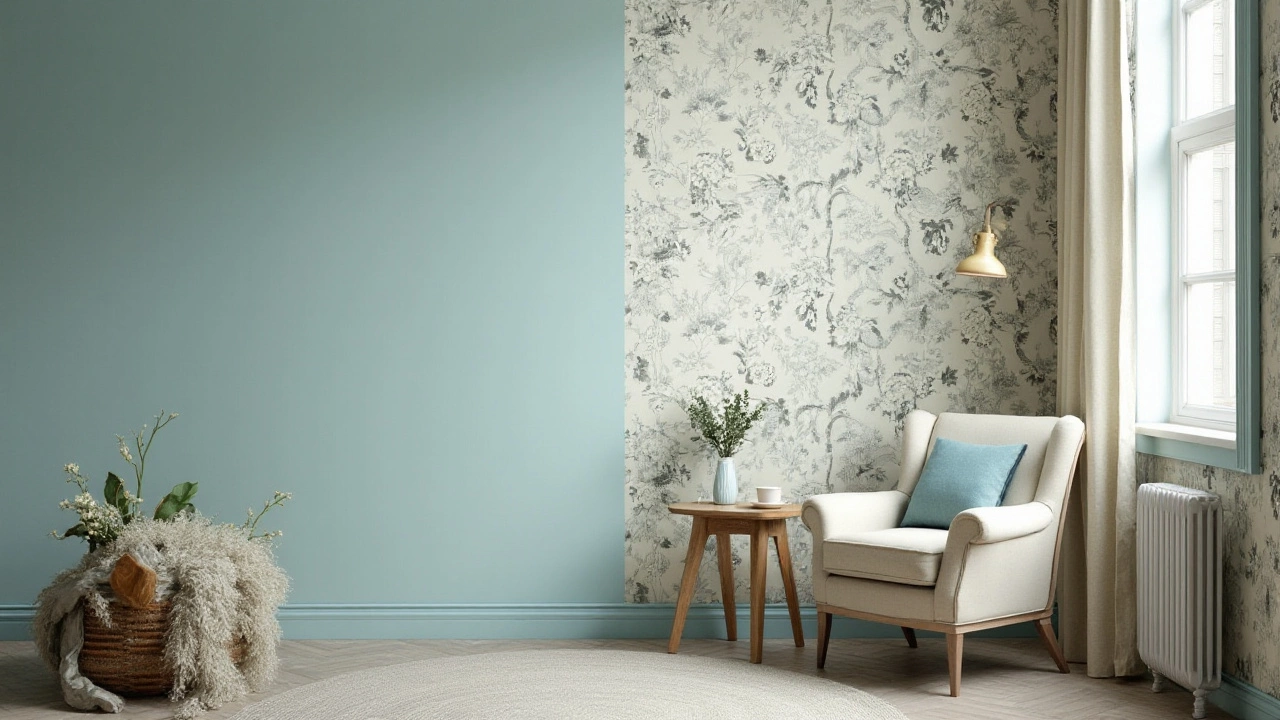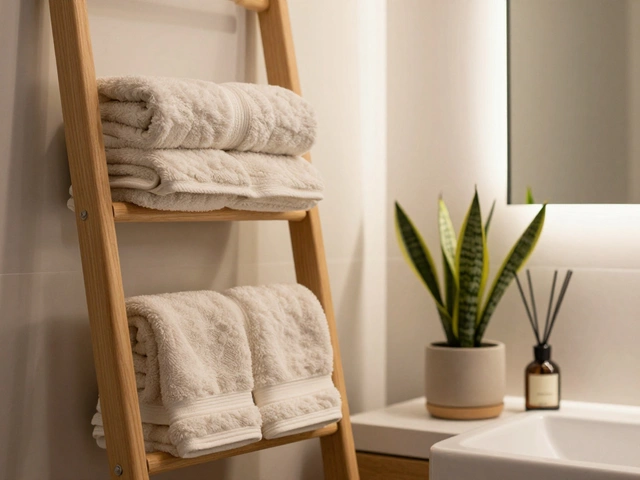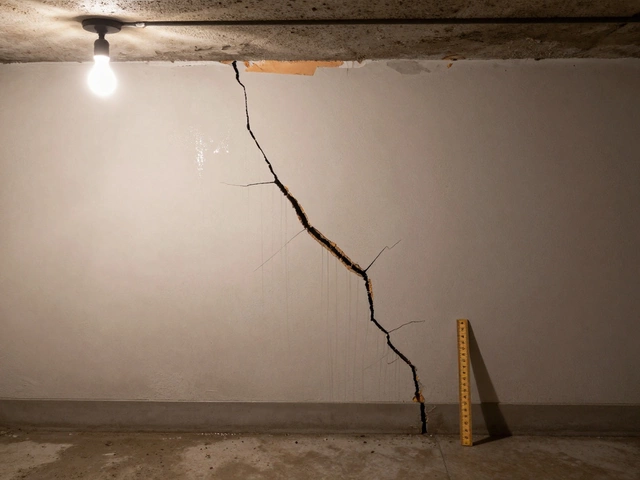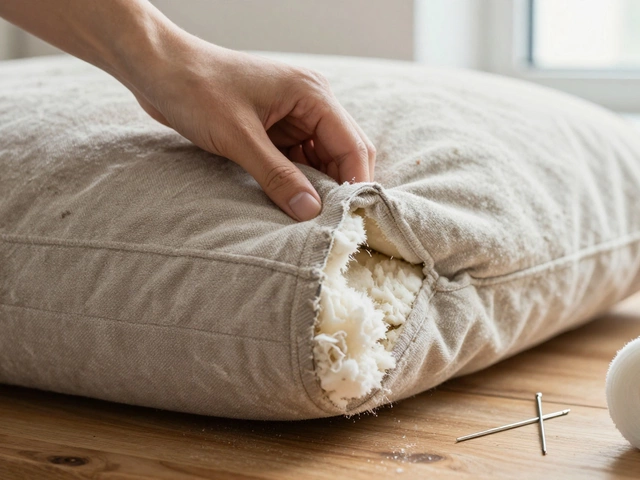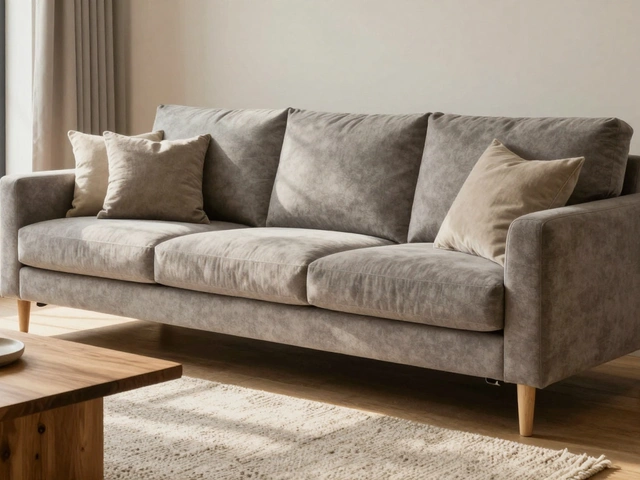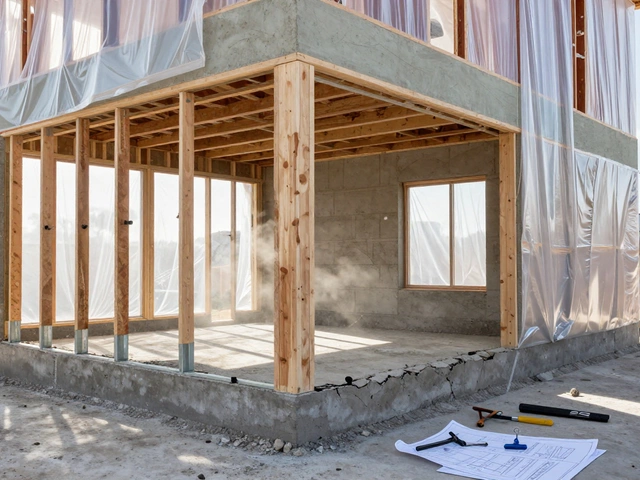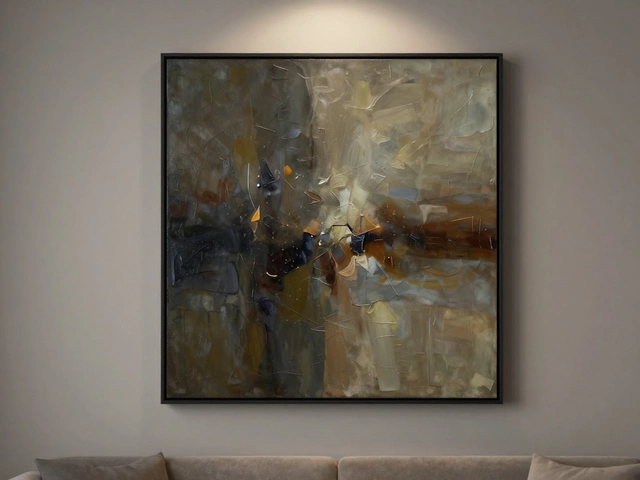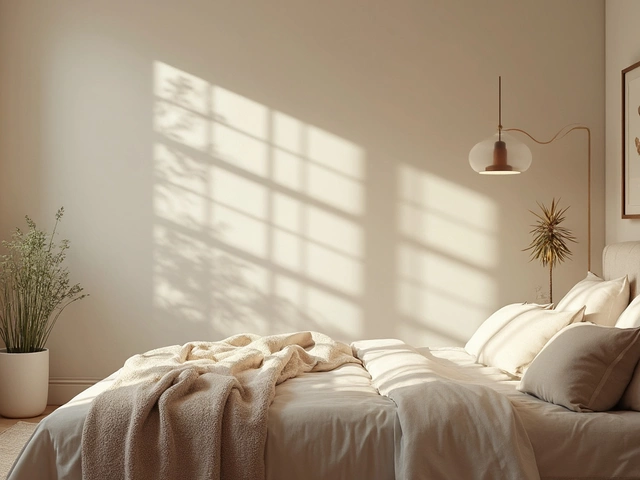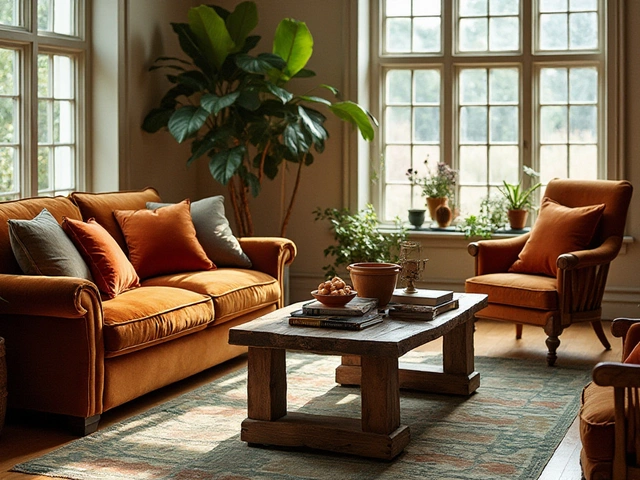When it comes to giving your walls a fresh new look, the decision between wallpaper and paint can be a bit of a head-scratcher. Both options bring their unique charm, but which one wins the battle of the budget? In this article, we'll dive into the nitty-gritty of costs associated with wallpaper and paint, aiming to make your decision as clear and cost-effective as possible.
The journey begins with prices: paints are generally straightforward with costs calculated by the gallon, while wallpaper varies dramatically depending on the style and brand. But it's not just about the sticker price. Installation, longevity, and maintenance play huge roles in determining true value in the long run. Join us as we explore these crucial factors, offering insights and tips along the way to help you make the best choice for your home.
- The Costs of Wallpaper and Paint
- Installation Differences
- Durability and Maintenance
- Aesthetic and Style Options
The Costs of Wallpaper and Paint
When you're standing in the aisle, staring at rolls of wallpaper and cans of paint, it might not be immediately obvious which is the more economical option. The cost of adding a personal touch to your home can vary widely based on the method you choose, and this decision is often swayed by factors beyond the simple cost per square foot. Let's break down the expenses involved in using wallpaper versus paint for your next home decor project.
When it comes to paint, simplicity is its strong suit. A gallon of standard paint can cover about 350 square feet on average and costs anywhere from $20 to $50. This means for an average room, you might need one to two gallons. Keep in mind that if you're choosing a glossy finish, or need a primer, the price can jump. Paint often appeals because of its straightforward pricing and the ease of picking up just what you need. Yet, costs can creep up quickly with professional help, which can double or even triple the expense.
On the other hand, the world of wallpaper is a bit more complex. Rolls of wallpaper come in all shapes, sizes, and costs, often depending on the design complexity and the materials used. High-quality wallpaper could set you back $30 to $50 per roll, with some premium designs costing even more. Each roll usually covers around 25 square feet, which means you'd need several rolls for an average room. Intricate patterns and luxury materials often require professional installation, adding to the cost due to the skill required to properly align patterns and ensure longevity.
A fascinating factor with wallpaper is its range of materials, from simple paper to vinyl and even fabric options, each with a different price tag. Paint, however, has its own set of choices, like matte or high gloss, each with distinct price points. Now, considering installation costs, painting can be a viable DIY project, while wallpapering is less forgiving when it comes to errors. The potential savings from installing wallpaper yourself might not extend beyond the apparent, as mistakes can be costly to fix.
"Choosing between wallpaper and paint involves considering more than just cost; it's about the experience, the visual impact, and what you're aiming to achieve in a space," notes interior designer Emily Henderson.
For those interested in a visual representation of the potential costs, a side-by-side comparison might look something like this:
| Item | Paint Cost | Wallpaper Cost |
|---|---|---|
| Material (100 sq ft) | $60 | $120 |
| Labor (Professional) | $100-$300 | $300-$500 |
| Total (Do-It-Yourself) | $60 | $400 |
| Total (Professional) | $160-$360 | $420-$620 |
In essence, while paint might seem cheaper at a glance, wallpaper offers durability and unique designs that could be worth the investment. Weighing the costs involves thinking about the future: wallpapers often last longer and can save money in the long run if you're planning to stay in your home for many years. So, when considering costs, it's not just about the initial outlay but the lifespan and maintenance of your chosen wall finish. As you contemplate the right choice for your decor, balance your budget with the aesthetic and practical needs of your home.
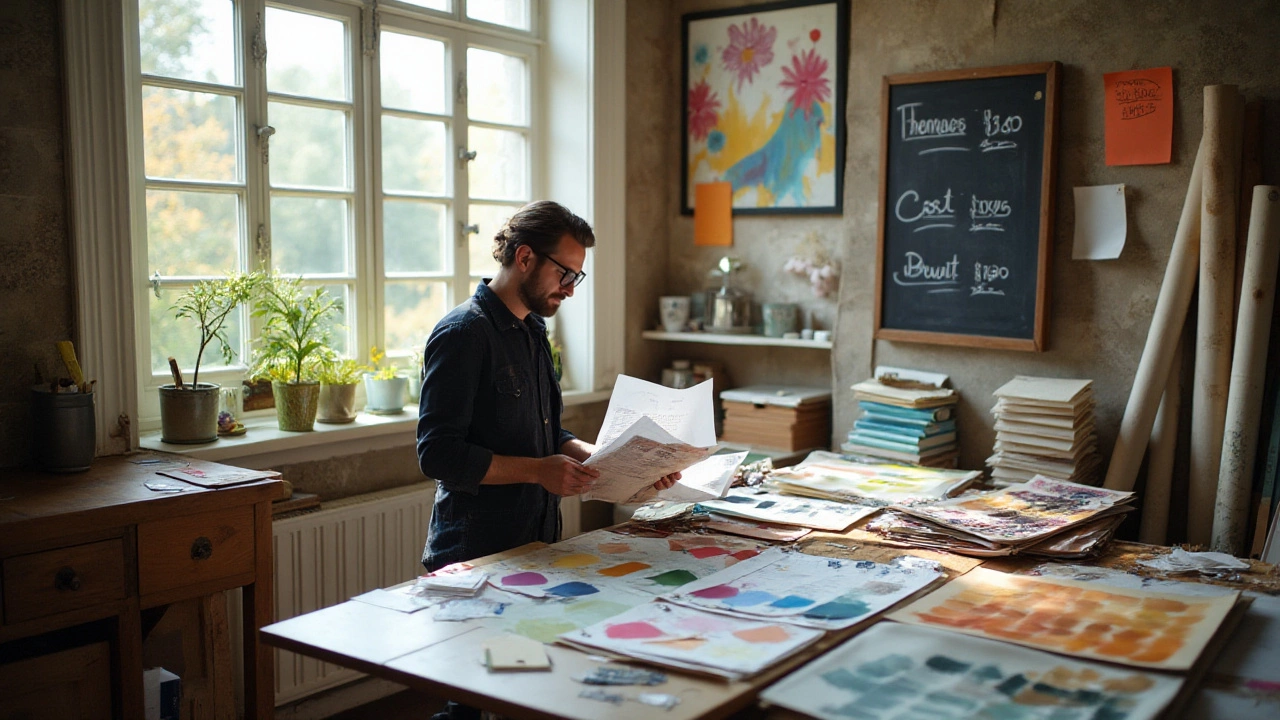
Installation Differences
When deciding between wallpaper and paint for your interior walls, understanding the installation differences can significantly influence your choice. Painting, in most cases, tends to be a more straightforward task. You need the basic tools: brushes, rollers, painter's tape, and of course, the paint itself. Prep work involves cleaning the walls, patching any holes, and protecting furniture and floors. For a DIY enthusiast, painting can be therapeutic, though achieving perfection might require professional help, especially for intricate designs or large spaces. The labor cost can vary but generally lies within a manageable range, making it an appealing choice for quick room makeovers.
Wallpaper installation, however, is akin to an art form. It requires precise measurements and a keen eye for detail. The process begins with selecting the right wallpaper—patterns, textures, and materials are in abundance. Once selection is finalized, the existing wall must be prepared meticulously—often more so than with paint. Smooth walls are a must, and sometimes old wallpaper needs to come off. The act of hanging wallpaper needs patience and skill. There’s less room for error both in alignment and adhesion, and this is where professional help is often indispensable. Misalignment or air bubbles can haunt the final look, yet when done correctly, wallpaper can transform a space into a work of art.
A fascinating aspect to consider is the time factor. Painting can usually be wrapped up in a day or two, depending on the room size and paint type, such as when opting for quicker-drying modern ethical paints. In contrast, wallpapering is generally more time-consuming. Sometimes it can take multiple days, especially for larger patterns that require seamless alignment across expansive surfaces. The aftermath of installation with wallpaper can include dealing with extra waste from trimming and custom fitting, which is an element of consideration when weighing its environmental impact.
The Cost of Skill
The necessary skill level often tilts the scales in this debate. Painting offers flexibility and a forgiving nature for novices trying their hand for the first time. In stark contrast, wallpapering demands expertise. Interestingly, according to professional decorators, an increase in demand for wallpaper installers has made this service more expensive over recent years, yet simultaneously, the gripping allure of trending patterns keeps its popularity intact.
"Wallpaper is like a tailored suit for your walls," notes interior designer Maureen Geoffrey, "There's no second chance for first impressions, and that precision is worth every penny."The labor associated with wallpaper often includes charges for removal of existing paper and the meticulous preparation required for new application, making it a more costly installation if opting for professional assistance.
In summary, while paint offers a simpler and sometimes faster option, the intricacy and elegance of wallpaper bring a different flavor to the table. Ultimately, the choice between these two rests upon individual priorities, whether they lean toward simplicity, budget, or the crave for a unique aesthetic that wallpaper can uniquely provide.
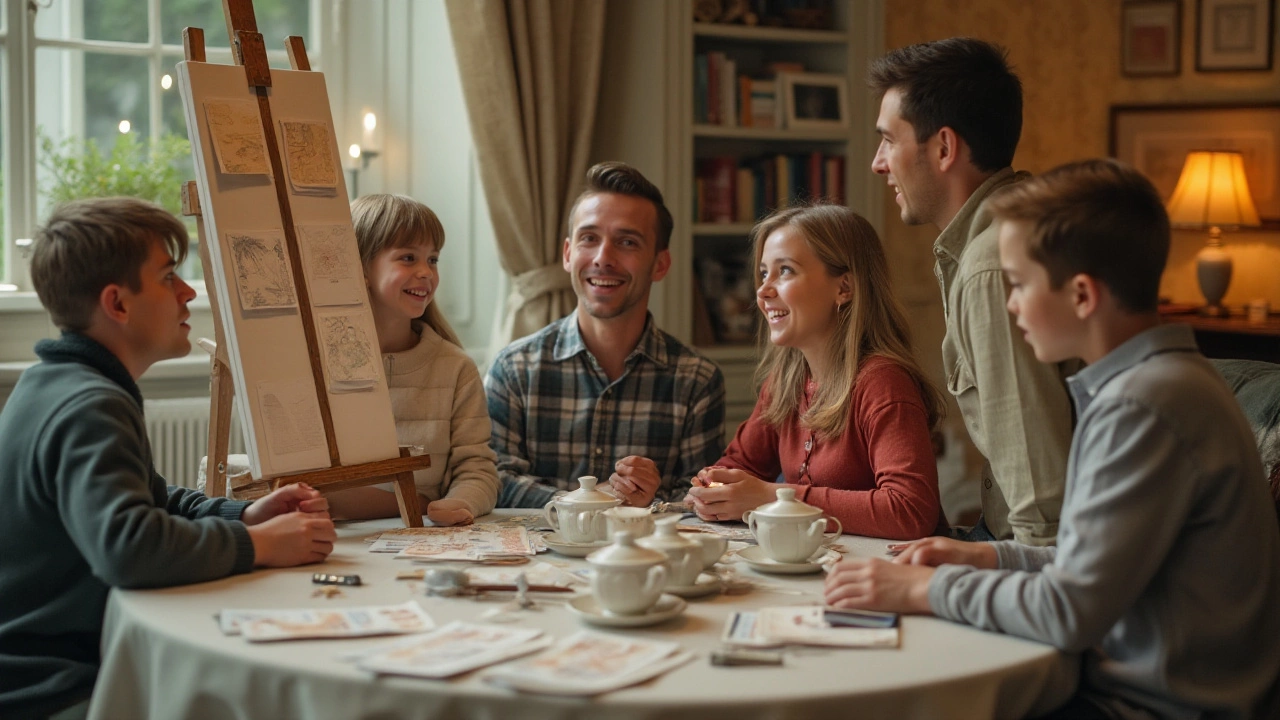
Durability and Maintenance
When it comes to enhancing your home’s interior, understanding the longevity and upkeep of both wallpaper and paint is vital. These elements are not just aesthetic choices; they are investments that should stand the test of time. In terms of durability, today's wallpapers are manufactured to withstand wear and tear better than ever before. Modern wallpapers often include vinyl or laminated finishes, which makes them resistant to moisture and relatively easy to clean. This feature is particularly beneficial in busy areas like hallways or family rooms where spills and smudges can occur. On the other hand, traditional paint does have its own endurance strengths, particularly with some of the newer eco-friendly, washable paints emerging on the market. They can be scrubbed clean without losing their vibrancy or sheen, which is ideal in kitchens and bathrooms where cleanliness is paramount.
Maintaining wallpaper can be straightforward if approached correctly. Most resilient wallpaper can be cleaned with a damp cloth and a mild detergent, ensuring that stains and marks do not settle permanently. Despite this, if a wallpaper gets significantly damaged, replacing a single section might require matching new sections with the existing pattern, which can be a bit of a puzzle. In contrast, repainting a section of a wall is generally less perceptible unless the paint has significantly faded over time. The end result often looks seamless, provided you still have the exact paint color and finish.
"Durability and ease of maintenance are why I chose wallpaper for my entryway," says interior designer Laura Evans. "With kids running around, I found that vinyl wallpaper stood up to fingerprints and was easy to wipe clean."
For those pondering the long-term aspect of wall finishes, it's crucial to consider the environmental impact too. Wallpaper that uses natural materials or water-based inks has gained popularity for being less harsh on the environment, a pressing concern for environmentally conscious homeowners. Similarly, low-VOC (Volatile Organic Compounds) paints are designed to reduce chemical emissions, making them safer for indoor use. These eco-friendly options not only contribute to a healthier planet but also protect your indoor air quality.
The aesthetic lifespan of both options depends on exposure to sunlight and usage. Continuous sun exposure can make certain wallpapers fade faster than painted surfaces, unless UV-resistant materials are used. Conversely, touching up faded paint in a bright room might be easier than redraping a whole segment of wallpaper. Weighing durability and maintenance needs can greatly influence your decision between wallpaper and paint, ensuring your walls remain as beautiful as they are functional for years to come.
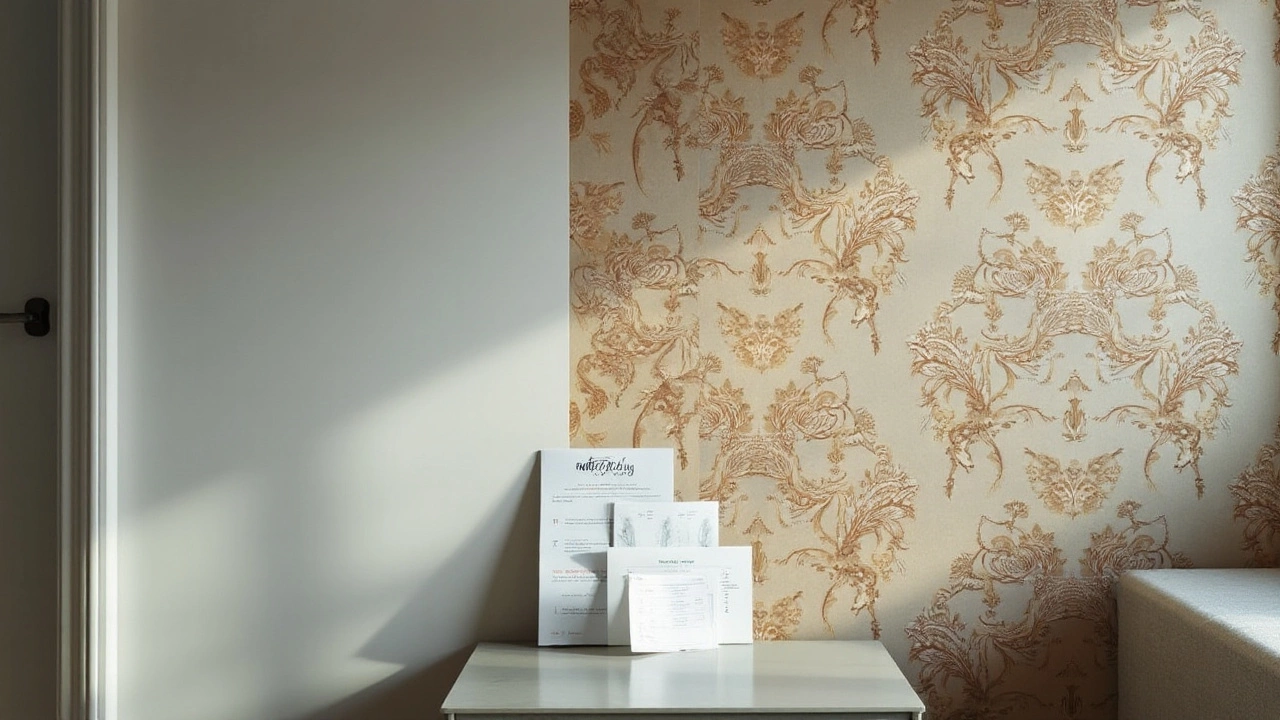
Aesthetic and Style Options
When it comes to revamping your interiors, the aesthetic appeal and style flexibility are crucial in choosing between wallpaper and paint. Each of these options can distinctly impact the ambiance of a room, offering an extensive range of designs that cater to various tastes and preferences. Paint, beloved for its versatility, allows homeowners to change their wall colors seasonally or yearly with relative ease. With a simple coat, one can transform a room into a tranquil oasis with pastels or energize a space with vivid and bold hues. The play with light, texture, and color is virtually limitless with paint, and creative techniques like ombre effects or brush strokes can be seamlessly executed.
On the other hand, wallpaper opens a different dimension of aesthetic charm with its ability to introduce intricate patterns, textures, and even three-dimensional effects. Modern wallpaper designs are not limited to traditional floral patterns or stripes; they now feature abstract art, geometric designs, and even photographic murals that transform walls into dynamic canvases. Consider textured wallpapers that mimic stone, wood, or even leather; they add a touch of luxury and depth, which paint alone might not convey. According to a design piece from Architectural Digest,
"Wallpaper has the power to completely change the character of a room, turning a dull and uninspired space into a masterpiece."
Color and Pattern Versatility
While paint offers a wide array of colors from various palettes, the real strength and unique value of wallpaper lie in its patterns. Patterns can dictate the mood of a room, from calm and serene to lively and vibrant. Geometrical print can add a modern flair, while nature-inspired motifs can instill calmness. Wallpapers can also be customized, providing a unique statement that reflects personal style and taste. This level of personalization can be particularly beneficial for accent walls or specific rooms intended to make a strong visual impact.
The choice could also be influenced by the existing decor and an individual's desire to either make a subtle statement or turn walls into focal points. For instance, a contemporary-styled room could benefit from a patterned wallpaper in neutral tones, adding sophistication without overwhelming other design elements. The interplay between walls and decor becomes a dance of balance, where both paint and wallpaper have parts to play, either as the lead or as a participant in the harmony of home design.
